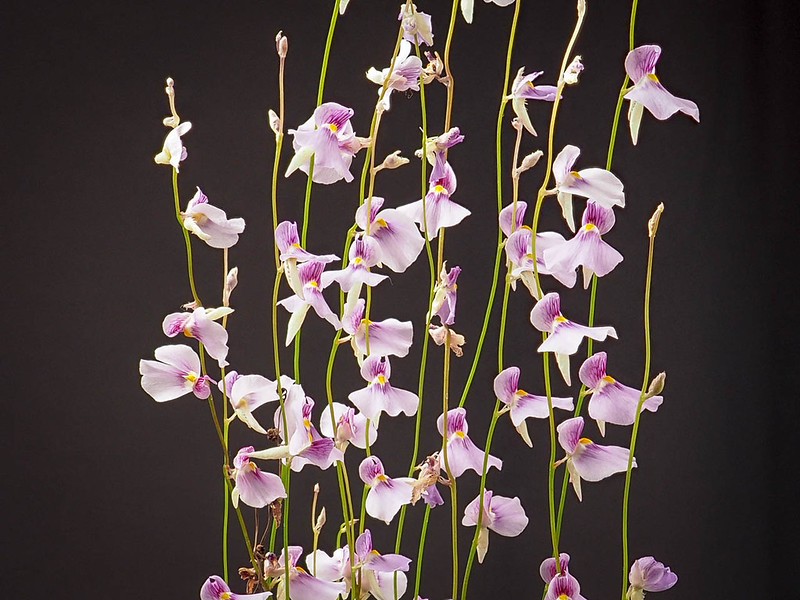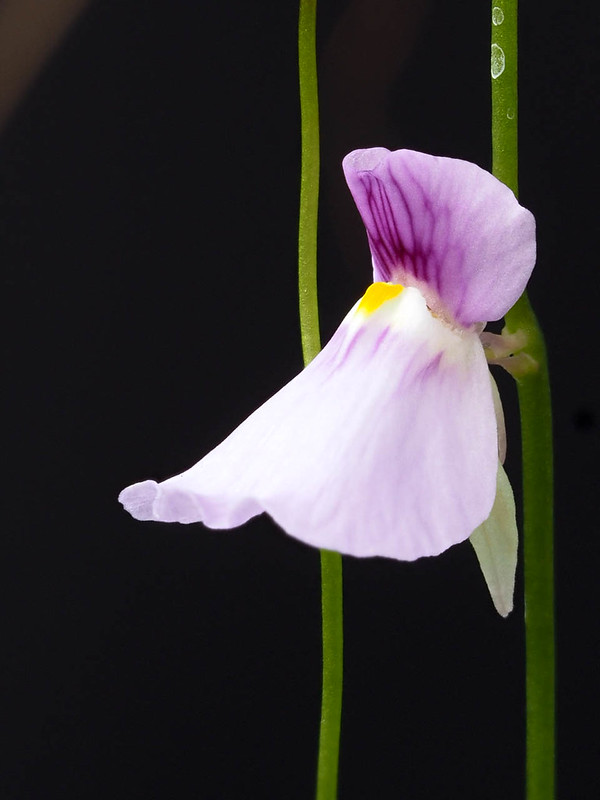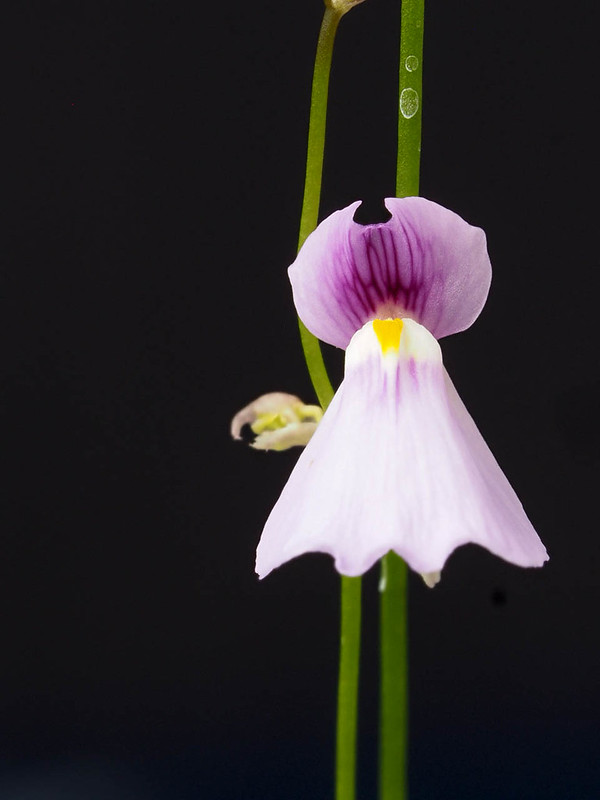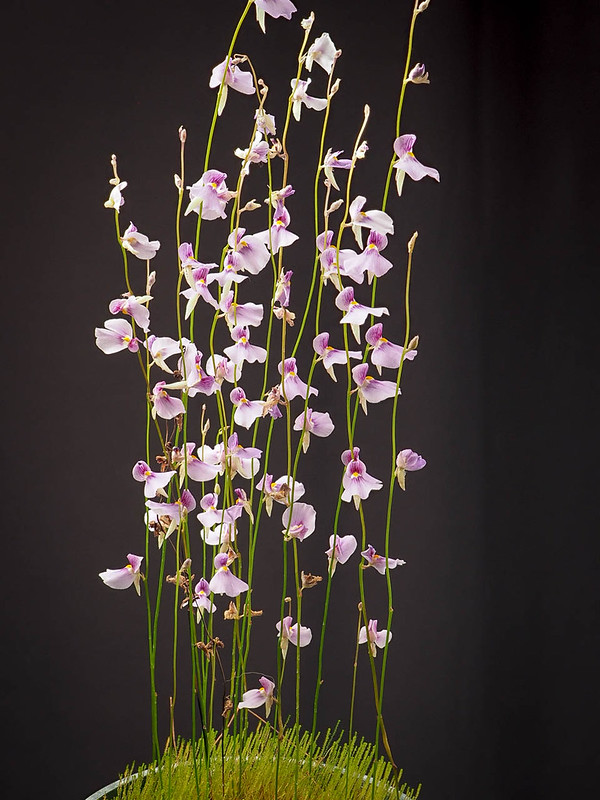
Utricularia blanchetii is found only in central Bahia, Brazil, and occurs in damp sand among rocks by streams (Taylor 1989). The elevation range is 850-1750m. This species belongs to section Aranella, in which 9 species are recognized, all from tropical South America with one species also occurs in Africa. It is similar to U. parthenopipes, which is also from Bahia, and often co-occur with U. blanchetii. The lower lip (petal) of the corolla is supposed to be 10-15mm long, which is much longer than 4-6mm of U. parthenopipes (Taylor 1989). The lower lip of my plant is about 8-10mm, so it is a bit at the small end for U. blanchetii. In addition to the flower size, the shapes of the upper lip and spur are different. Here is an excerpt of the Taylor's (1989) artificial key distinguishing these two similar species:
- Corolla 1cm long or longer; upper lip transversely oblong, c. 6mm wide; spur acute, somewhat longer than the lower lip --- U. blanchetii.
- Corolla less than 7 mm long; upper lip broadly obovate, less than 4mm wide, spur subacute, considerably shorter than the lower lip --- U. parthenopipes.


 |
| The margins of the two sepals (calyx) are fimbriate (fringe like). The bottom sepal can be seen behind the spur. Many species in this section Aranella have the fimbriate or dentate calyx. |
Tanabe (2010) noted that the flowers have vanilla-like fragrance. However, my plant does not have any fragrance. It is a floriferous species, and each flower is fairly large, so it is a very attractive species when it is in full bloom.
 |
Culture: It seems to be an easy species. I'm currently using Pro-Moss III Emerald Sphagnum Peat Moss : small perlite=2:1 in a tray of 1-2cm water. The daily maximum/minimum temperature is 29/18C (85/65F) most of the time. According to Tanabe (2010), this species can be grown wide-range of temperature and it can overwinter if you keep it above 5C. The intensity of light is 150 µmol/m2/s in terms of photosynthetic photon flux density (PPFD), which is about 1000 footcandles with my COB-LEDs. The day length is 13 hours. The light intensity seems to be at the low end, but it is growing well and rapidly filled the pot.
Literature Cited:
- Tanabe, N. 2010. 食虫植物の世界: 420種 - 魅力の全てと栽培完全ガイド. (English translation: The World of Carnivorous Plants: 420 species), MPJ Publishing, Kanagawa, Japan.
- Taylor, P. 1989. The Genus Utricularia - A Taxonomic Monograph, p.249-253, Royal Botanic Gardens, Kew (reprinted in 1994).
Comments
Post a Comment